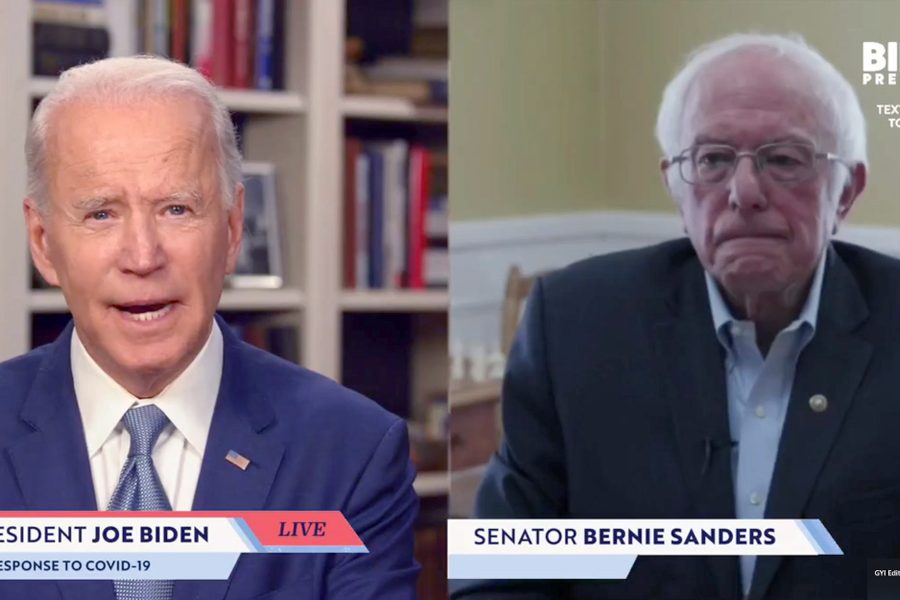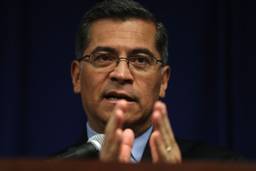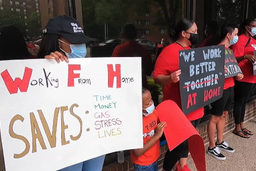What’s Missing From the Biden-Bernie Task Force Plan? Medicare for All.
The recommendations are an improvement on Biden’s previous healthcare plans, but a public option won’t cut it. We need free, universal coverage.
Natalie Shure

On Wednesday, the “unity task forces” set up by presumptive Democratic presidential nominee Joe Biden rolled out a set of policy recommendations for the candidate, and, by extension, for the party writ large. Launched in May, the group behind the proposed platform was comprised of a core of establishment-aligned politicos as well as allies of Bernie Sanders, the primary’s runner-up whose campaign advanced an agenda squarely to the left of Biden.
While the task forces provided recommendations on issues ranging from climate change to criminal justice, the healthcare group attracted much attention as observers wondered how the group would square the wide gap between Sanders’ unwavering calls for a single-payer Medicare for All system, and Biden’s commitment to maintaining the private insurance system enshrined by the Affordable Care Act (ACA).
Unsurprisingly, the task force did not endorse Medicare for All, which would essentially liquidate the existing version of private health insurance and replace it with a single public system that covers everyone and provides all necessary and effective care free from the point of use. But the presence of former Michigan gubernatorial candidate and single-payer advocate Abdul El-Sayed as well as Rep. Pramila Jayapal (D-Wash.) — who each endorsed Sanders, and the latter of whom is the lead sponsor of the Medicare for All bill in the House — was evident in more left-leaning measures than Biden has previously embraced. If the healthcare platform as presented were to be fully implemented under a future President Biden, it would amount to a significant improvement on the status quo — albeit with persistent gaps that can’t be resolved without abolishing private health insurance as it’s currently constituted.
The recommendations front-load a temporary phase of coronavirus-related emergency measures, many of which have emerged as consensus demands from Democrats — including free coronavirus testing irrespective of immigration status, federally-bankrolled expansion of contract tracing, and a period of 100% premium subsidies for those eligible for COBRA coverage throughout the duration of the pandemic. The document also calls for a special enrollment period for ACA marketplaces, which will include a stopgap low-fee platinum option for people who run out of, or don’t qualify for, several months of full COBRA subsidies.
More broadly, the task force seeks to reinvest in critical public health infrastructure at the local and state level, much of which was financially hollowed out during the Great Recession and has been left in disrepair since. It also calls for permitting Medicare to negotiate prescription drug prices, funding for research into racial health inequities, repealing the Hyde amendment and securing protections for LGBTQ people that were rolled back under President Trump.
The task force also advances a blueprint for a public option, which includes critical details that gesture toward left-wing activist pressure, as well as ambiguities that could bolster the sort of profit-seeking gamesmanship that renders the current system so dysfunctional.
For starters, the proposal hints that the public option may actually be a set of options, à la Medicare, which offers “consumer choice” while in practice curbing access to care while lining insurers’ pockets. Still, according to the proposal, at least one public option plan available on the marketplaces must be publicly administered and have zero deductibles, which is far preferable to the kind of privately-administered “public option advantage” plans these recommendations leave the door open to. The public option, as laid out here, would also be extended for zero premiums to individuals who qualify for Medicaid but live in non-expansion states, automatically enroll low-income people who earn too much for Medicaid, and be available as an alternative to employer-based coverage. Meanwhile, the Medicare eligibility age will be lowered from 65 to 60, and barriers will be lowered for states seeking waivers to build state-based single-payer programs.
All of these changes would be an improvement upon the healthcare system as it exists now, an abysmally low bar that Republicans are nonetheless desperate to limbo beneath. In the wake of their unsuccessful attempts to repeal and replace the ACA in 2017, the GOP has consistently chipped away at the law however possible, through pushing Medicaid work requirements, bottoming out budgets for navigators and advertising to help inform and guide patients through enrollment, and loosening restrictions on short-term junk plans. Even more gravely, the Trump administration recently encouraged the Supreme Court to strike down the entire ACA.
But assessing just how much Biden’s task force’s plan would improve the lives of patients depends on details we simply don’t have. The proposal stipulates that premiums will be capped at 8.5% of income (more for a family), which could potentially mean that a slate of relatively robust public option plans would force private plans to improve substantially to compete. Or, more likely, private insurers could take a cue from Medicare Advantage and find ways to cherry-pick healthier patients while off-loading sicker ones onto the public program.
Cost-sharing is also partially unresolved — a public option plan with zero deductibles, for example, may well entail higher copays and coinsurance, perhaps going so far as to foist enrollees into private supplemental plans parallel to “Medigap” coverage for Medicare recipients.
Furthermore, the crucial issue of provider networks goes unmentioned. As networks have narrowed in recent years with insurers trying to save money by covering fewer and fewer providers, many ACA plans have failed to adequately cover certain types of care, like mental health. Traditional Medicare, by contrast, doesn’t have networks and thus affords patients free choice of providers. What kinds of benefits and cost-sharing will be applied to which public option plans will make a world of difference — and will require even more expertise to suss out than the notoriously confusing ACA exchanges already do.
Ultimately, however beefy a public option turns out to be, there are things it can never do. By offering one more insurance product to a list of several others — even if it’s the best of the bunch — the public option does little to alleviate the misery of navigating the administrative quagmire endemic to our healthcare system. It still leaves gaps for patients to fall into, and forces them to beg claims assessors for coverage by phone. And it still casts us as healthcare consumers, shopping for the best-valued access to a foundational human need that shouldn’t be commodified to begin with.

I hope you found this article important. Before you leave, I want to ask you to consider supporting our work with a donation. In These Times needs readers like you to help sustain our mission. We don’t depend on—or want—corporate advertising or deep-pocketed billionaires to fund our journalism. We’re supported by you, the reader, so we can focus on covering the issues that matter most to the progressive movement without fear or compromise.
Our work isn’t hidden behind a paywall because of people like you who support our journalism. We want to keep it that way. If you value the work we do and the movements we cover, please consider donating to In These Times.







